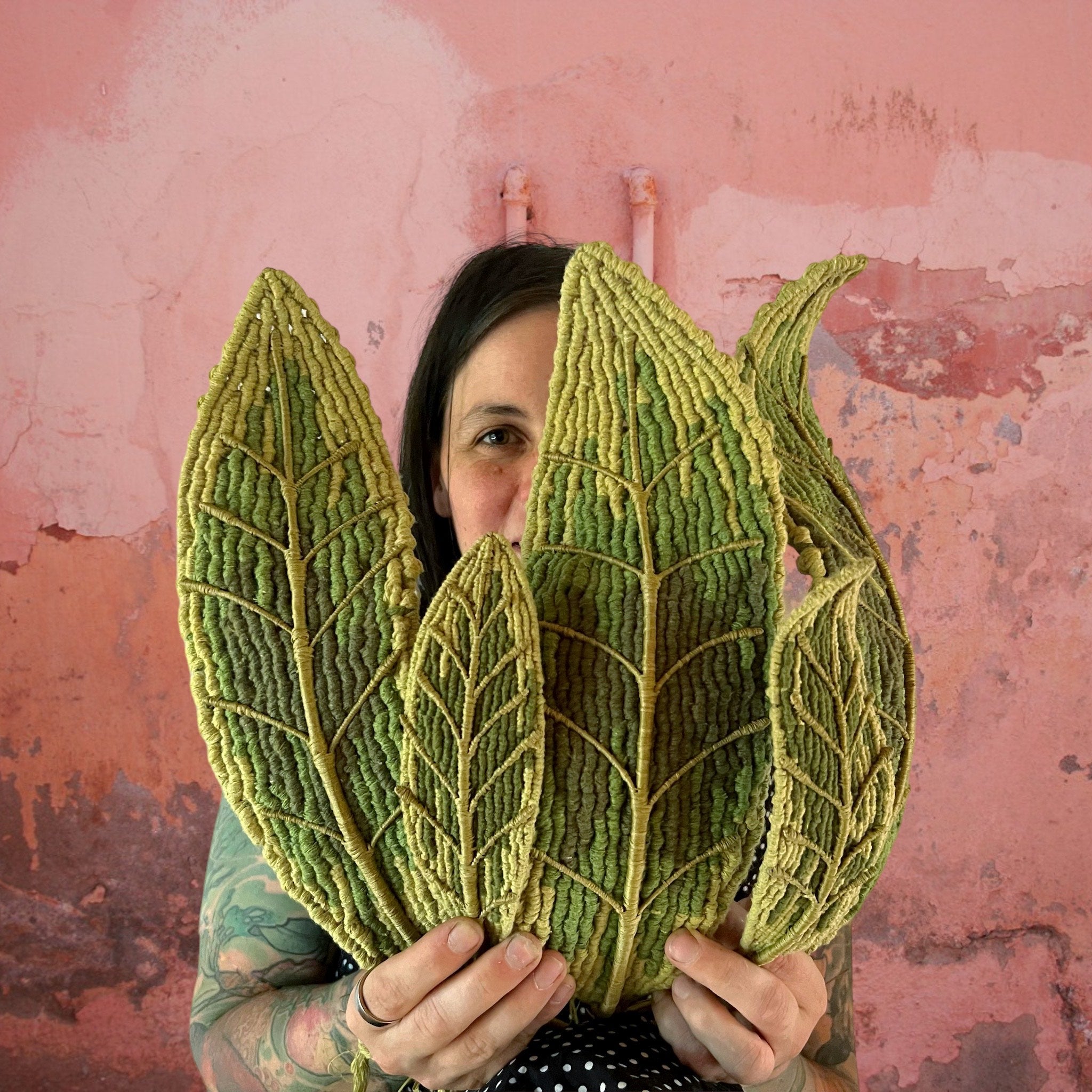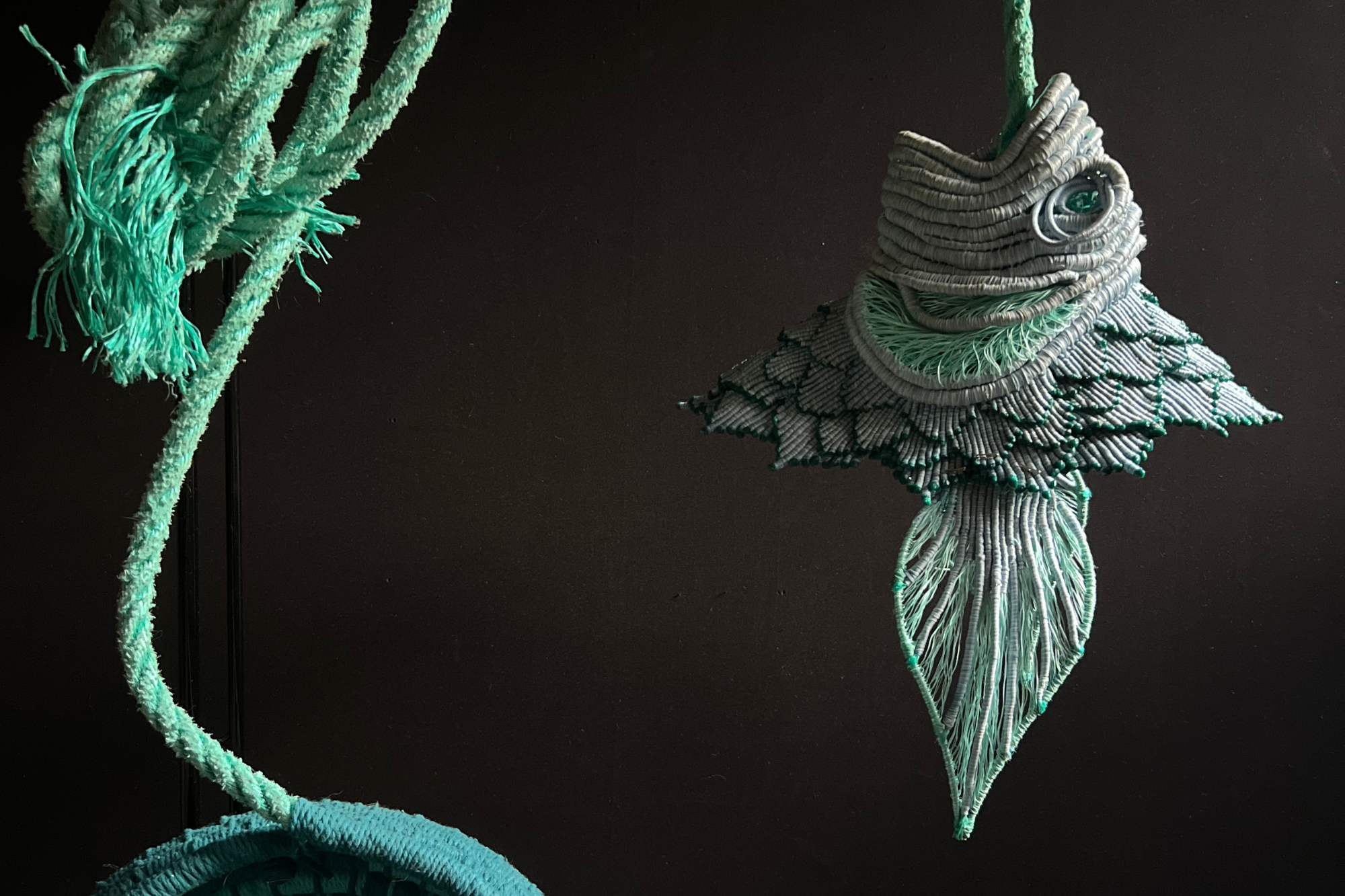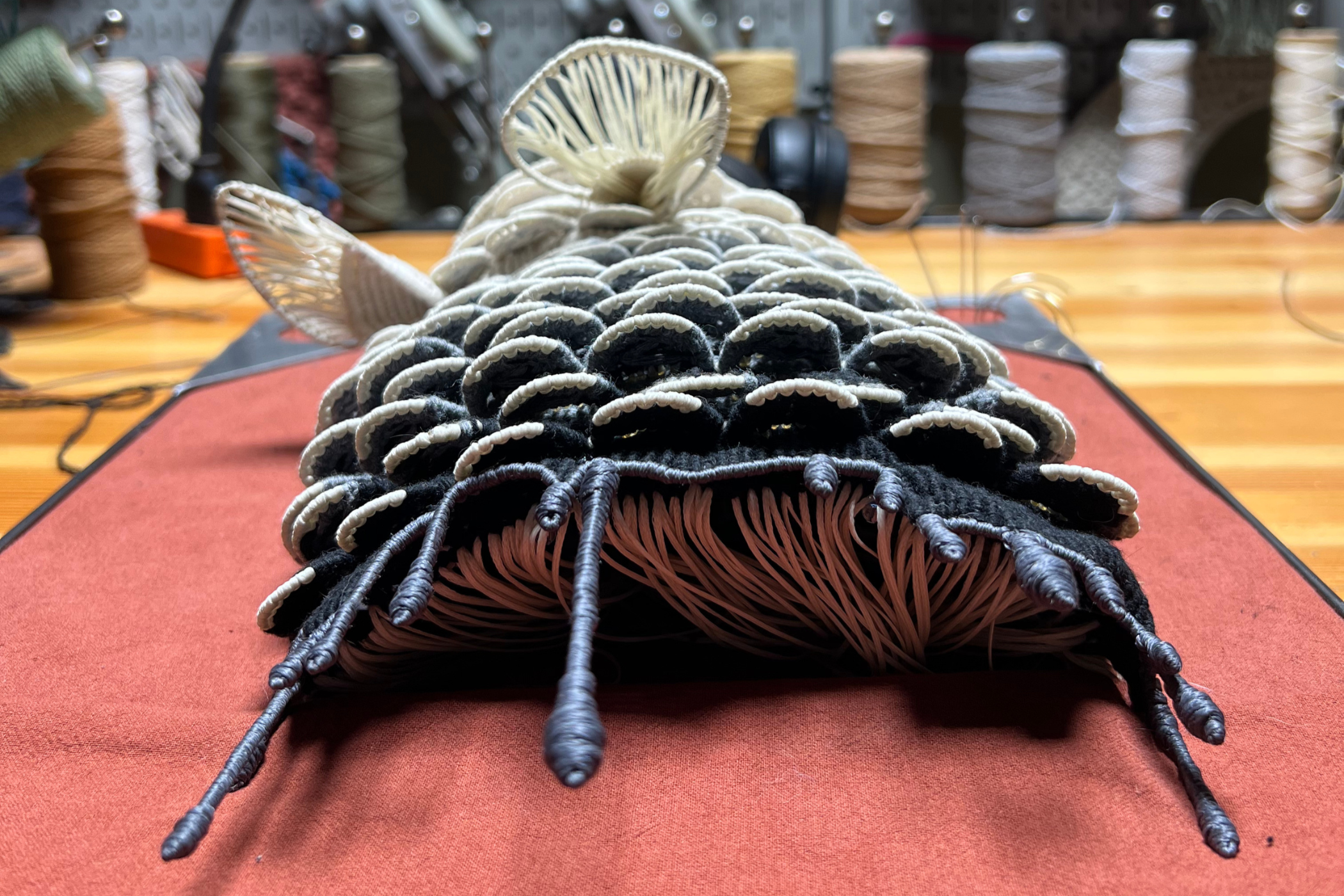
Artist Statement
I bring things back to life. Most often, I resuscitate anatomies by finding imaginative spaces within the confines of illness and decay. To do this, I adopt materials that have been used for industrial-grade destruction.
Each of my textile sculptures is composed of tiny knots: a method for examining tension while materially employing it. I frequently return to the same subject matter, even when pieces fall years apart. My revisitation of subjects stems from a commitment to slow, steady organic processes of transformation. Traversing more ground is not as ethical a premise to me as watching the same ground change over time.

Material Choices
The majority of fiber I work with has, at one time, been an agent of ecological destruction. In 2024, I was granted 1500 lbs of rescued marine debris from Ocean Legacy, a non-profit organization tasked with coastal cleanup across British Columbia, Canada.
Discarded by fish farm operations and left as solid-form petrolium oil spills that destroy oceans, this industrial detritus material will never decompose. So I break it down myself. I separate, cut, melt, splice, and knot around kgs of this ocean debris rope with each new sculpture I create.
By harnessing the power of waste, I find twisted beauty in our current geological epoch.

Bio
Janis Ledwell-Hunt’s knotted sculptures redefine macrame as a figurative contemporary art form. Made from repurposed textile waste, marine debris, and discarded metal machine parts, Ledwell-Hunt’s mixed media sculptures are built from the detritus of different industries. Abandoned materials that would otherwise sit in “waste” are redeployed to contemplate relationships between species (both real and imagined).
Heavily influenced by surrealism, magical realism, post-humanism, biomedical illustration, and feminism, Janis Ledwell-Hunt is a Canadian textile artist who calls Vancouver Island home. Her partner, Loren Wilson, a skilled welder and machinist, acts as metal fabricator at pivotal moments in each sculpture.